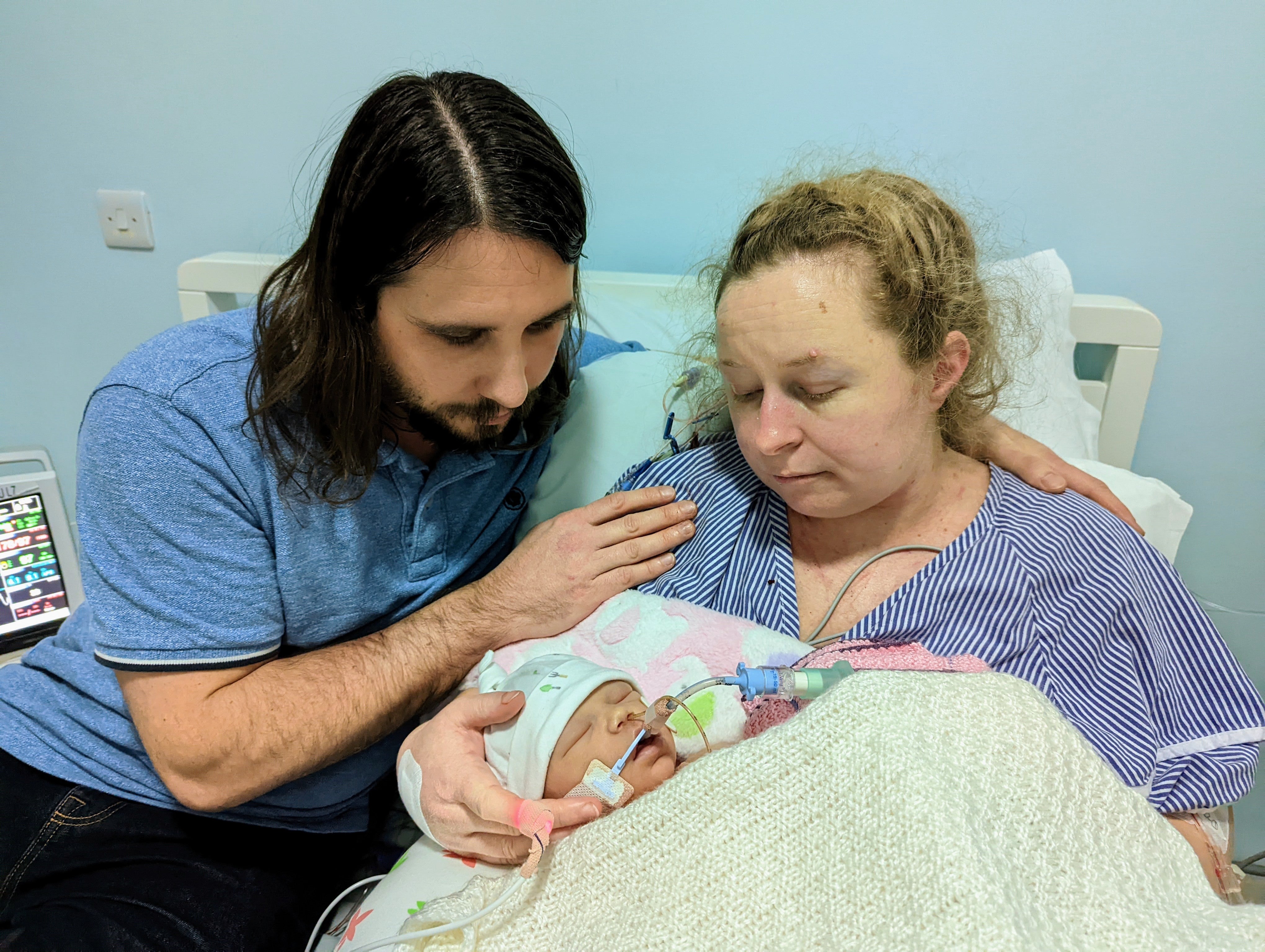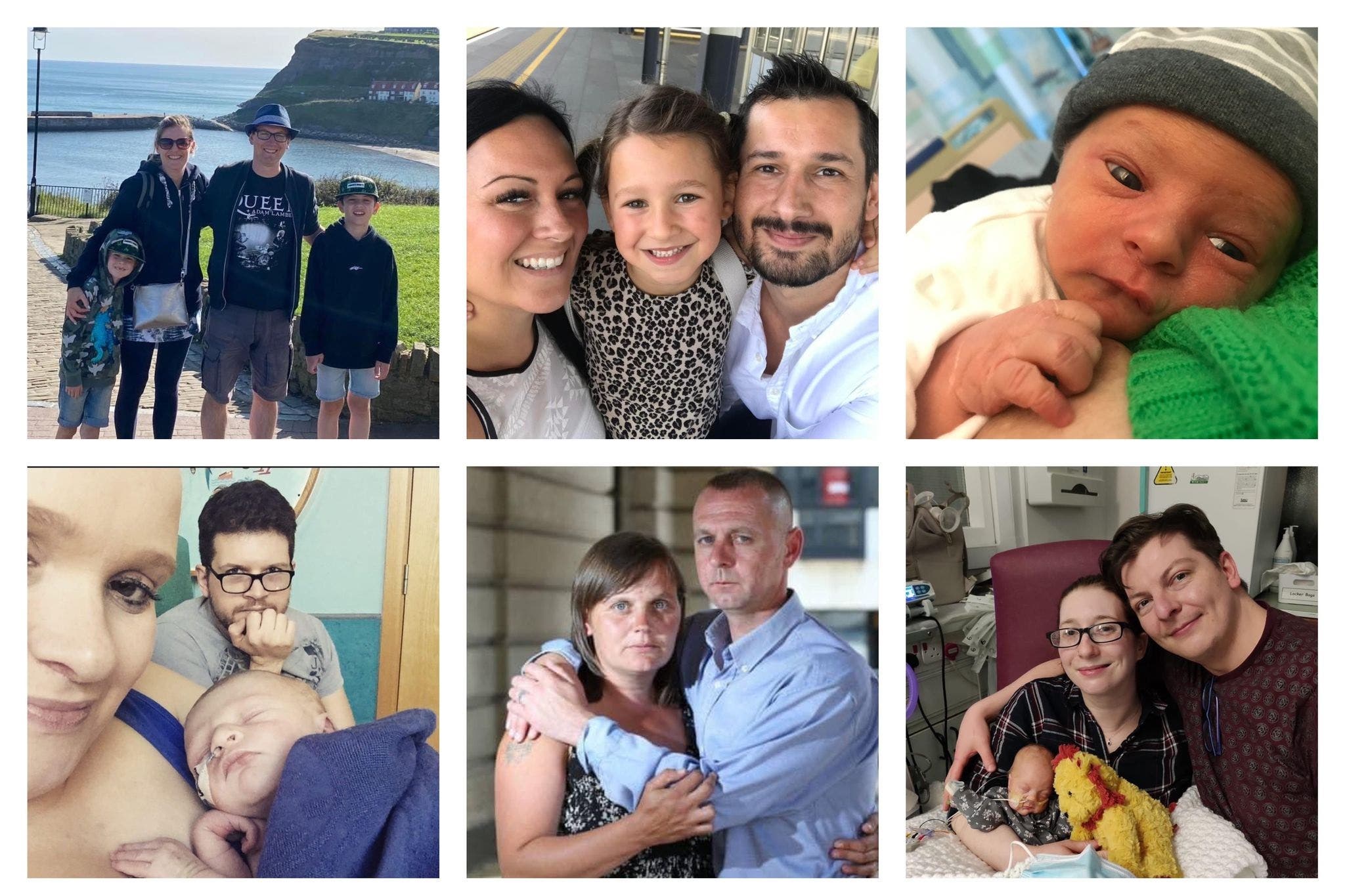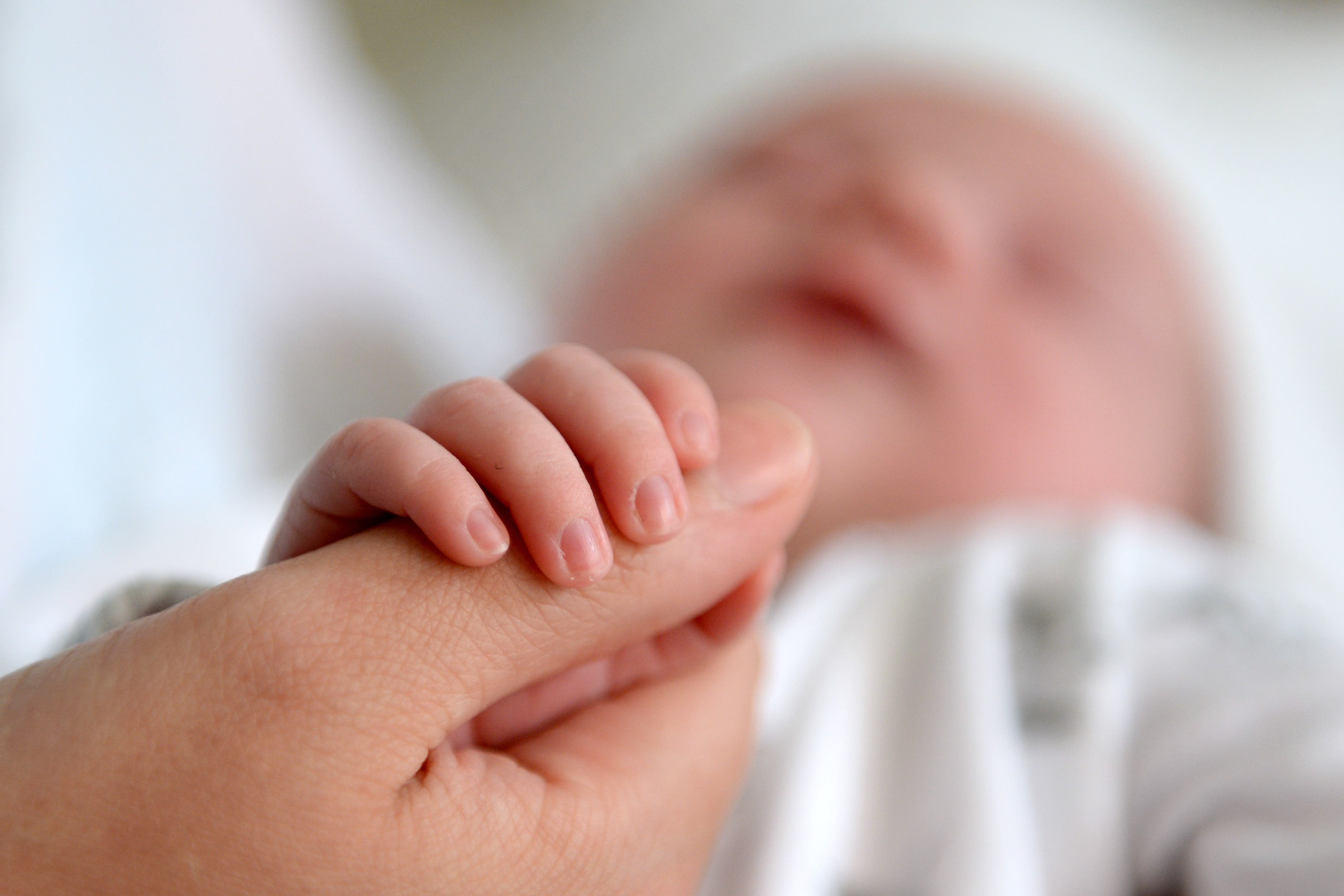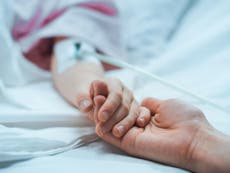‘I thought I would be bringing home my baby girl, instead I was told that she was dying’
Giving birth in the UK has become more dangerous than in almost any other northern European country, with two in three maternity units declared unsafe. How did this happen, asks Rosie Taylor, who talks to the families now demanding a national public inquiry

The last thing Katie Fowler remembers is travelling in a taxi to hospital to have her baby. Two days later, she was woken from a coma in intensive care and told her daughter Abigail had been born but would not survive. “I thought I would be bringing home my baby girl,” Katie said. “Instead I was woken up and told that she was dying. It was the worst moment of my life.”
Abigail died in her parents’ arms later that day, at just 48 hours old. It was a desperately tragic situation – and yet, as an inquest heard last week, it was also completely avoidable. Katie and her husband Rob Miller are the latest bereaved parents to join calls for a national public inquiry into maternity services in England.
There have already been a number of high-profile inquiries into individual trusts, including Morecambe Bay, Shrewsbury and Telford, and East Kent.
The latest, chaired by Donna Ockenden, is under way in Nottingham and is examining up to 1,800 cases of baby deaths, stillbirths, maternal deaths and severe maternal and baby injuries after The Independent uncovered poor care over more than a decade. Just this week, two more maternity units, at Royal Derby Hospital and the Queen’s Hospital in Burton upon Trent, were downgraded to inadequate. The maternity unit at the Royal Sussex County Hospital in Brighton was similarly downgraded just three months before Abigail Miller died. There are also calls for another inquiry in Leicester from a family whose baby died there.
Maternity cases now make up more than half the NHS’s total spend on damages in clinical negligence claims, costing £1.1bn a year out of a total of £2.6bn. That’s £3m per day – or equivalent to £1,817 for every baby born in 2022.

Earlier this month, the CQC revealed two-thirds of maternity units in England were not safe enough, up from 55 per cent a year ago. The number of maternity units classed as “inadequate” – the poorest safety rating where it is considered there is a high risk of avoidable harm – has doubled in the last year. No wonder the Maternity Safety Alliance is now calling for an England-wide inquiry.
An inquest into Abigail’s death heard how the unit had missed multiple chances to call in her mother Katie for assessment after she went into labour on her due date on 21 January 2022.
Katie and her husband Rob had phoned the unit twice during the day to say she was experiencing blood loss but their concerns were dismissed. The couple should have been asked to come in for assessment on both calls, a report later found.
Then just before 7pm, Katie turned pale and her lips went blue. Her contractions stopped and she was struggling to breathe.
Rob made another call to the unit, where a midwife said Katie’s new symptoms were likely to be caused by a “panic attack”. The midwife should have immediately called an emergency ambulance – instead, she suggested the couple make their own way to the hospital. What staff couldn’t tell over the phone was that Katie was actually experiencing massive internal bleeding, caused by a uterine rupture (a rare complication where the womb tears). She went into cardiac arrest due to blood loss as the taxi pulled up outside the hospital’s general reception area.
Rob ran into the lobby, shouting for help. A student nurse sounded the alarm and doctors from different departments rushed to resuscitate Katie. They performed an emergency C-section then, there in the lobby, and tried to stabilise baby Abigail in a makeshift resuscitation area set up on two chairs.
Katie was rushed off for surgery to stem the bleeding and then placed in an induced coma in intensive care. At the same time, a critically ill Abigail was transferred to neonatal intensive care.
Rob was told there was no hope that Abigail would pull through and begged they keep her alive until Katie could meet her. After nearly two days, Katie came out of her coma and said goodbye to her daughter.
Last week’s inquest found Abigail would have survived if Katie had been called into hospital earlier. So why wasn’t she?
“The midwives who were in charge of our care that night were under extreme pressure,” Rob said. “We weren’t listened to, but we have come to realise this wasn’t about individual mistakes but about systemic problems.
“Abigail’s death was not a one-off – maternity care is declining across the country.”

Nisha Sharma, principal lawyer at Slater and Gordon, who represented the couple, agrees a national inquiry is now required. “The lives of babies and mothers are at risk until action is taken” she added.
Although the risk of dying during or after childbirth in Western countries remains very low, the UK has the second highest maternal death rate among eight major European nations, with only Slovakia performing worse, according to an analysis published in the BMJ last year.
In the UK, 9.6 women died in every 100,000 live births between 2016 and 2018 – more than three times higher than those who died in the best-performing country Norway. Mothers were also less likely to die in Italy, France, Denmark and the Netherlands, compared with the UK. And both mother and baby deaths remain significantly more likely in patients who are Black, Asian or from other minority ethnic groups.
James Titcombe, whose son Joshua died due to failings in his care 15 years ago, said: “It feels right now that progress in maternity safety has stalled and, worse still, in some areas we are now at risk of heading backwards.”
He stressed that many frontline staff members have been working to improve care – but they cannot do it unsupported by the wider system.
The Maternity Safety Alliance says inquiries into individual maternity units keep finding the same problems: issues with culture, leadership, inequality, service structures, education and training, accountability, and governance.
“Over and over we hear that ‘lessons will be learned’ – and yet those same failings continue,” the alliance said. Families believe a national public inquiry is the only way to “understand why it keeps on going wrong, and most importantly find a way to fix the system”.
While there are multiple, interlinked and complex reasons why maternity services are struggling to provide safe care, some failings are clear. For example, there are currently around 2,500 fewer midwives in the NHS in England than are needed to maintain safe staffing levels, according to the Royal College of Midwives.
Despite expansions to the number of midwifery university places since 2020 in an attempt to combat large numbers of experienced staff leaving as the baby boomer cohort reaches retirement age, overstretched maternity services have a huge problem retaining newly qualified midwives.
This is partly due to a “toxic culture” that is leading to them leaving in droves, says the campaign group #Saynotobullyinginmidwifery.
One former midwife, who recently left frontline services less than three years after qualifying, told me the lack of senior midwives meant less experienced staff were carrying out difficult procedures alone. The situation was creating an atmosphere of fear, while also putting women and babies at risk.
“The job was physically and emotionally exhausting,” she said. “Most of the people I trained with have also left.”
Another newly qualified midwife cited in #Saynotobullyinginmidwifery’s report last month said that working in maternity services was like “playing a warped game of Russian roulette and just praying the tragedy doesn’t occur on your shift”.
And midwife shortages are exacerbated by problems elsewhere in the system, including a lack of theatre beds, on-call consultants and anaesthetists – who are often stuck dealing with emergencies in A&E.

Midwifery has also become more complex, as women having babies are now older on average and more likely to be overweight and/or to have pre-existing health conditions. These higher-risk patients often require more intensive monitoring during labour and are more likely to have medical interventions in their births.
As another experienced midwife I spoke to put it: “Even if you have the same ratio of midwives to women as you did 20 years ago, you’re now understaffed because there is more work to do.”
Short staffing and greater demand are two key issues affecting the wider NHS, so why do maternity services seem to be so badly affected? The elephant in the room, said Sarah Graham, author of Rebel Bodies: A Guide to the Gender Health Gap Revolution, is that maternity services are seen as “women’s” services.
“The crisis in maternity care is one of the clearest symptoms of the gender health gap. Healthcare that is predominantly run for, and by, women is routinely underfunded and overlooked, with issues that mostly affect women dismissed and deprioritised,” she said.
She adds there has long been an expectation that maternity services can continue to run despite being under-resourced because both midwives and women having babies will “simply get on with it” in difficult circumstances.
In March, NHS England published its three-year plan for improving maternity and neonatal services. It is bringing in measures designed to improve staff retention, create a “culture of safety” and improve standards.
Will it be enough to bring about change? Bereaved families are yet to be convinced it can happen without a national inquiry.
“There are systemic problems that need to be properly looked into,” adds Katie. “Doctors have warned the NHS is a ‘sinking ship’ – but in shipwrecks, mothers and babies are usually rescued first. If we can’t keep them safe, there is little hope for the rest of us.”






Join our commenting forum
Join thought-provoking conversations, follow other Independent readers and see their replies
Comments